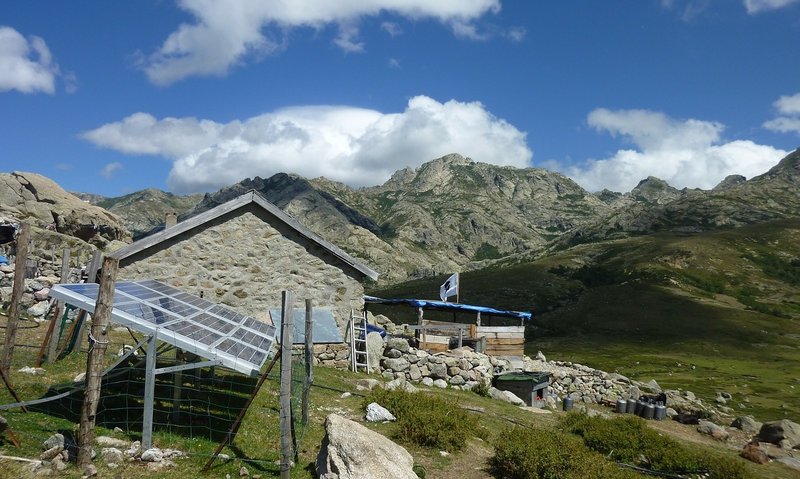
There are many green building materials on the market that can make your home healthier and more comfortable, if you are building or improving your current home.
If you are able to find a green home builder in your area, most of the details for construction of your home will be handled by him.
However, if you are working with a builder who is still learning about green building materials and green home construction, you may have to become involved in choosing green building products for your new log or timber home.
In the last few years we have become more and more aware that our natural resources are dwindling.
Building smaller homes, using fewer building materials with less waste, and building products that don’t pollute (even during manufacturing), will help us to build sustainable homes.
In addition, using green building materials that don’t pollute our home spaces will help many people stay healthier.
Examples of Green Building Materials

Structural insulated panels are an example
of green building materials.
Fairly new to the construction industry is the use of panels. There are two kinds of panels. Structural insulated panels (SIPs), and panels that resemble traditional stick building.
Both methods produce a tight and very energy efficient home.
Structural insulated panels may be guaranteed to retain their energy efficiency for many years.
On the other hand, panels made with fiberglass insulation will lose their efficiency, in time.
Using panels has several advantages. Your home’s shell will go up quickly, often in just a few days.
And panel companies, unlike conventional building sites, create very little waste. In fact, many actually recycle any waste products into more building materials.
Another approach to green building products is to use recycled or used materials. Timberframe structures often have old beams that were taken from a building that was disassembled.
These large beams can be used over and over, if they are kept from the weather—and they can be expected to last 500 years!
Using energy efficient windows is another way to lower your energy needs, but still have the enjoyment of natural lighting and beautiful views.
Indoor Air Quality When Using Green Building Materials
Preventing indoor pollution is extremely important, as many of us become ill because of exposure to chemicals in our homes—and we never really know why we don’t feel well!
Off-gassing
Ever notice a new paint smell when you entered a building? It was probably chemicals that were being released from paint.
Adhesives and sealers can do the same thing. You can avoid this by having your builder use low or zero VOC formaldehyde-free interior paints and sealers.
Flooring
Have allergies? Consider hard surface flooring like tile, concrete, bamboo or hardwood. These are easier to keep clean and free from dust mites and pet dander.
Ventilation Fan
Your new bathroom and kitchen will have ventilation fans. Use them. They take out stale air and cooking odors and they also remove moisture, which supports mold.
Your range hood should vent to the outside.
Mold and Mildew
Choose materials that don’t support mold and mildew, especially if you are building in a wooded area or on a waterfront property.
Air conditioning will help to remove moisture from the air. SIPs (structural insulated panels) are built so that they don’t support mold or mildew.
Wall Coverings
Wallpaper is not so much in vogue as it once was. But some people still prefer it to painted walls. Vinyl wallpaper can trap moisture, breeding mold.
Consider using a zero VOC paint or a natural plaster finish on your walls.
Depending on your builder, you may have a greater or lesser degree of input into the green building materials that he uses.
Keep in mind that, if the changes that you suggest are more costly, you will see the additional expenses added to your bill.




